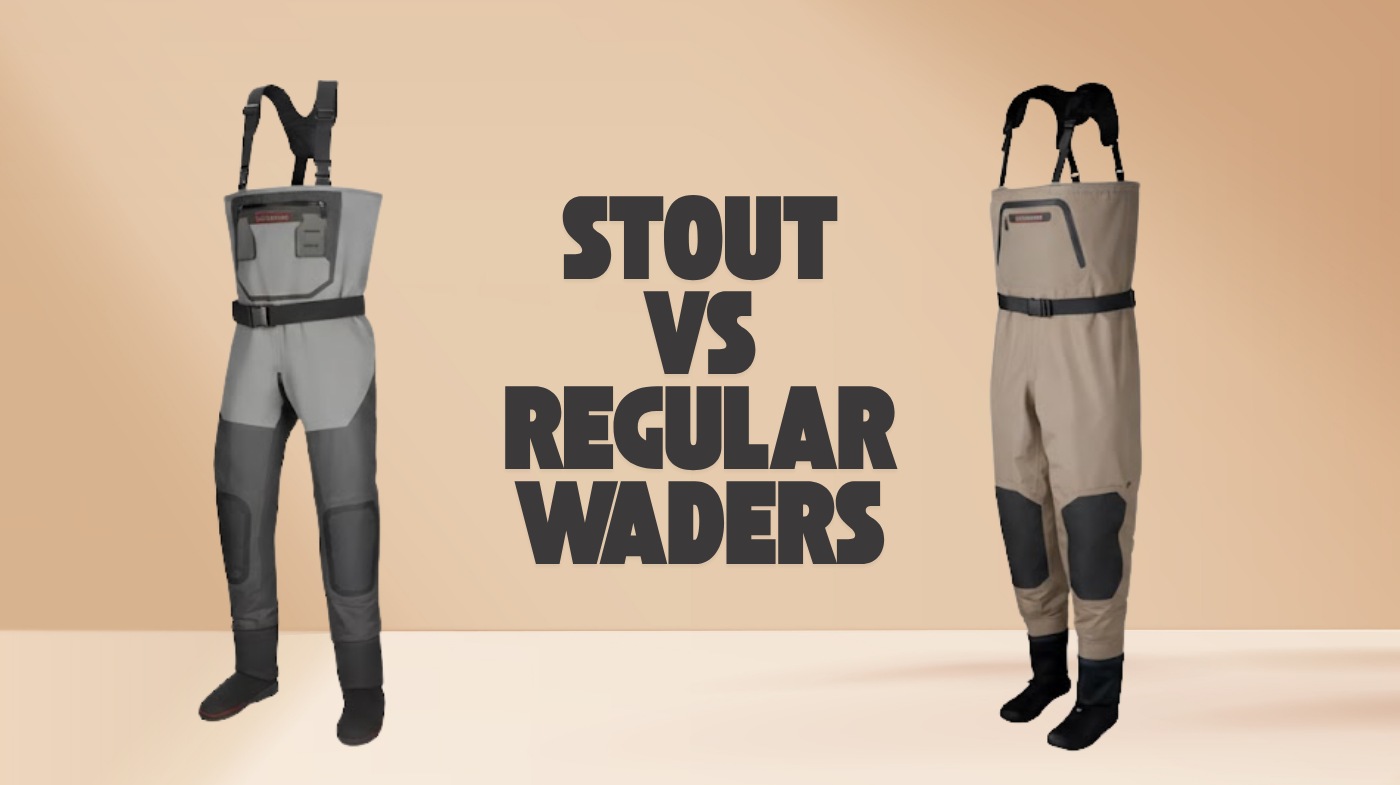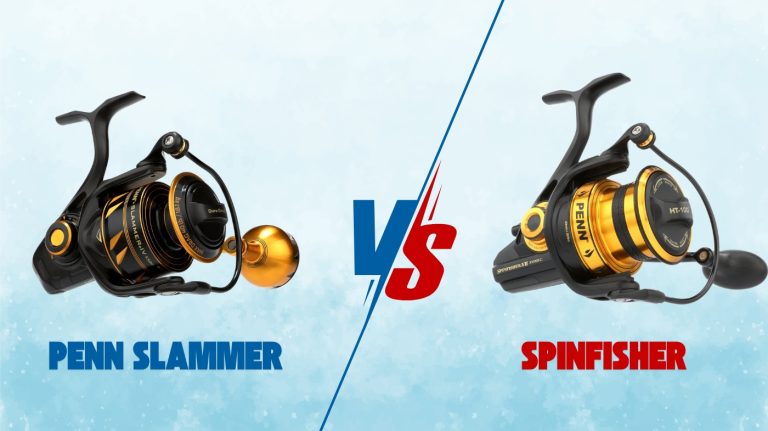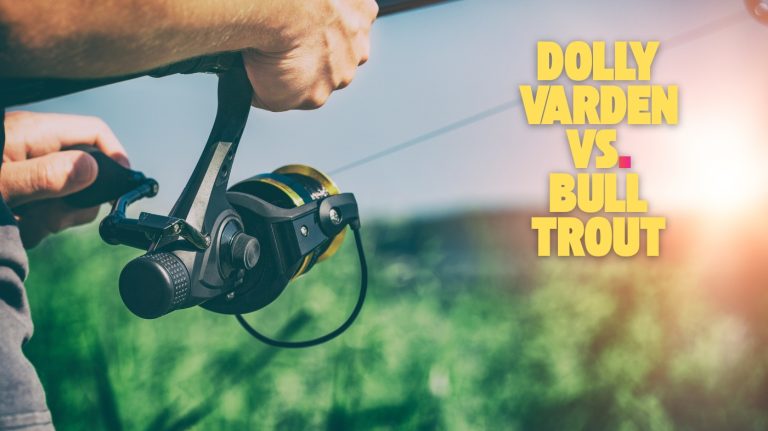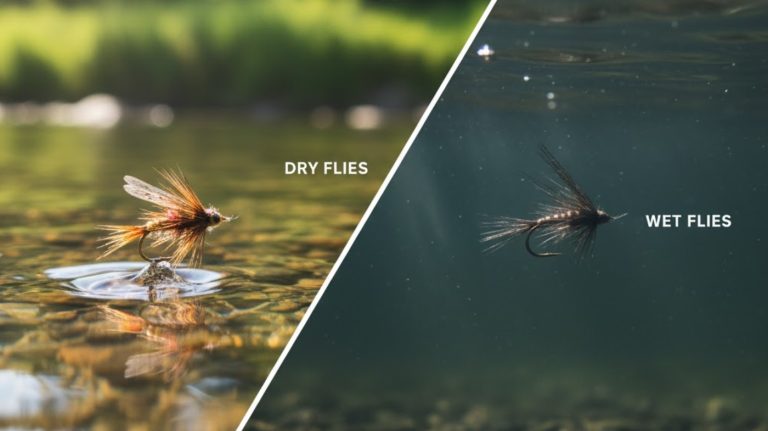Stout vs Regular Waders: Key Differences to Know
If you have a broader build or need extra durability in harsh terrains, stout waders give you more room for insulation and rugged use. They often feature thicker neoprene and reinforced areas.
Regular waders fit slimmer frames better, offering lighter, more flexible materials ideal for active fishing in moderate conditions. Proper sizing is critical for mobility and comfort in both types.
Understanding these differences helps you choose the best wader for your body type and fishing style. Detailed guidance is available below.
- 100% waterproof and breathable chest wader made with a durable 4-ply nylon upper and double…
- Large zippered box pocket on the front chest features a large rear pass through pocket for ample…
- 2″ wide adjustable suspenders feature attachment points uniquely designed for fly fishing to carry…
- Zippered, removable 120-gram insulated liner
- Heavy-duty abrasion-resistant nylon in the shin, knee and seat areas
- 4-ply polyester upper with quick-access 10-count shell holder
Key Takeaways
- Stout waders are designed for broader body types, with larger chest, waist, and hip dimensions than regular waders.
- Stout waders use thicker, more durable materials, ideal for rugged terrains and cold conditions compared to lighter, flexible regular waders.
- Regular waders prioritize mobility and breathability, suitable for active fishing in moderate to warm environments.
- Stout waders allow for comfortable layering and insulation, while regular waders are better for quick-drying and lighter use.
- Stout waders typically cost 10–20% more and have limited availability due to specialized sizing and materials.
Side-by-Side Comparison of Stout and Regular Waders for Smarter Buying
| Feature | Stout Waders | Regular Waders |
|---|---|---|
| Body Fit | Designed for broader builds with expanded chest, waist, and thigh space | Tailored for slimmer to average frames with standard proportions |
| Material Feel | Often thicker and more rugged; added reinforcement for harsh terrain | Typically lighter and more flexible for mobility |
| Layering Space | Extra room for insulation layers without compression | More fitted; suitable for minimal to moderate layering |
| Mobility | Can feel bulkier, depending on fabric type | Offers greater freedom of movement and agility |
| Durability | Built for abrasive environments, cold water, and tough terrain | Ideal for general fishing conditions and warm-to-moderate climates |
| Breathability | Lower breathability in neoprene; breathable models available | Higher breathability with moisture-wicking fabrics |
| Weight | Slightly heavier due to additional material | Generally lighter and less restrictive |
| Availability | More limited sizing and stock | Widely available across brands |
Understanding the Purpose of Stout and Regular Waders
While both stout and regular waders serve the fundamental purpose of keeping you dry in wet environments, their designs cater to distinctly different conditions and user needs.
Stout waders are engineered for rugged, demanding terrains where sharp objects and abrasive surfaces are frequent. They use thicker, multi-ply fabrics with reinforced panels at high-wear zones like knees and lower legs, prioritizing durability and puncture resistance over weight or breathability. This added protection helps prevent injuries and gear damage, enhancing mobility and safety in harsh environments. Their superior waterproofing and coverage make them especially suitable for prolonged water exposure and challenging conditions.
You’ll find them ideal for hunting in dense brush, rocky riverbeds, or submerged hazards.
In contrast, regular waders focus on general use in less extreme settings, employing lighter, more flexible materials that enhance mobility and comfort. These are suitable for open water or soft terrain, favoring versatility, breathability, and ease of maintenance for recreational users. Their design often includes lightweight construction that provides quick drying and greater freedom of movement.
Key Differences in Fit and Measurements
Because fit and measurements directly impact comfort and performance, understanding the distinctions between stout and regular waders is essential. Choosing the correct fit can also enhance overall mobility and durability during extended use.
Stout waders suit broader builds with increased chest, waist, and thigh dimensions, while regular fits target average, slimmer frames. Proper sizing starts with boot size, then body cut, with stout options often featuring reinforced seams for durability. More expensive waiters offer size options based on foot size and body type (stout, tall, etc.), which helps ensure a better fit and longer-lasting wear. Ill-fitting waders limit mobility and cause premature wear.
| Feature | Stout Waders | Regular Waders |
|---|---|---|
| Body Compatibility | Larger, stockier builds | Slim to average builds |
| Measurement Focus | Expanded chest, waist, thigh | Standard proportions |
| Mobility Impact | Prevents strain, allows freedom | Risk of tightness or sagging |
| Sizing Variance | Multiple stout grades available | Classic outdoor sizing |
Material Considerations for Stout Vs Regular Waders
Understanding the fit and measurements of stout versus regular waders sets the stage for evaluating their material differences. Both stout and regular waders primarily use neoprene or breathable fabrics like polyester or nylon with waterproof membranes. Neoprene waders are naturally waterproof and provide excellent insulation, making them ideal for cold water conditions.
Neoprene offers consistent insulation through nitrogen bubbles, available in 3mm to 5mm thicknesses, often enhanced with Thinsulate™ for superior warmth. Breathable waders rely on layering and moisture-wicking liners, which are more common in regular fits.
Durability is robust in neoprene across both fits, resisting punctures and lasting 5-7 years. Breathable waders last 3-5 years but are more vulnerable to damage. Additionally, reinforced seams in high-wear areas extend the lifespan of both stout and regular waders by preventing early deterioration.
Weight and bulk increase in stout neoprene due to larger dimensions, though material properties remain constant. Breathability favors breathable waders, offering ventilation regardless of fit, unlike neoprene’s moisture retention. The flexibility and comfort of breathable waders also make them preferable for active movement and longer wear times.
How Sizing Charts Influence Your Choice?
When it comes to choosing the right size, it’s super important to keep in mind that brand sizing can vary quite a bit. Sizing charts aren’t one-size-fits-all; they often have different ways of measuring things like chest, waist, and inseam, especially when it comes to stout versus regular fits. Proper care and maintenance of your gear, such as using gentle hand washing techniques for felt shoes, can also influence how well your waders and boots hold up over time.
So, what should you focus on? I’d say start with the chest and waist measurements—make sure to measure at their widest points. This will help you figure out whether stout or regular sizing is going to give you the comfort and mobility you need. Remember that breathable waders tend to be cut larger than neoprene ones to allow for easier movement, so factoring in this difference can be crucial for the right fit breathable wader cut.
And don’t forget about the other factors! Take a look at how each sizing chart handles boot size and layering allowances. These details can really make a difference in ensuring you get a fit that’s not only precise but also functional for your needs.
Brand Variability Impact
Although wader sizing charts vary widely across brands, they play a crucial role in guiding your selection process. You must scrutinize each chart’s details—chest, waist, inseam, and boot size—to avoid fit issues that restrict movement or cause discomfort.
Differences in size labels and additional length or width variants complicate cross-brand comparisons. This makes it essential to analyze measurements precisely. Taking accurate body measurements with a soft tape measure ensures the best possible sizing match and helps accommodate factors such as line flexibility that influence comfort and performance in fishing gear.
Key variability factors include:
- Diverse sizing standards and inclusion or exclusion of shoe size in charts
- Model-specific fit variations and adjustable features altering overall wearability
- Inconsistent measurement details forcing reliance on multiple data points for accuracy
Understanding these nuances helps you minimize returns and identify brands with reliable sizing. This enhances fit confidence and purchase satisfaction.
Measurement Priorities
Sizing charts form the backbone of selecting waders that fit properly, especially when distinguishing between stout and regular builds.
You need to prioritize chest girth if it surpasses waist size, measuring around the upper chest under the arms. Understanding measurement priorities ensures better comfort and function.
Conversely, waist measurement dominates if larger, taken at the natural waistline.
Inseam length dictates leg fit, while shoe size ensures stockingfoot or boot compatibility.
For stout builds, sizing charts often recommend sizing up to allow layering and mobility, accounting for extra room around knees and crotch.
Women’s charts add hip and bust measurements, with M-FULL sizes for fuller figures.
Always check for no tightness in critical zones when squatting and ensure snug but comfortable boot fit.
Proper interpretation of these measurements prevents restriction and enhances comfort during fishing.
Additionally, using thicker socks during fitting helps simulate actual river conditions and ensures the waders will fit comfortably when worn in the field, highlighting the importance of layering considerations.
Ideal Use Cases for Stout Waders
When you’ve got a larger build, stout waders really come in handy. They give you the extra waist and thigh room you need for a comfortable fit without feeling restricted. It’s all about being able to layer up effectively and move freely, which is super important when you’re out there for a long time. For those with a short stature, the slightly baggy fit of stout waders provides additional comfort and flexibility. Unlike hiking boots, stout waders often use materials designed for water resistance and durability to keep you comfortable in wet environments.
Larger Build Accommodation
Because waders must fit securely without restricting movement, stout sizes cater specifically to anglers and outdoor enthusiasts with broader chest, waist, and hip measurements.
These waders feature increased girth dimensions and often a slightly shorter inseam to better align with larger torsos and relatively shorter legs. This enhanced fit prevents tightness, which is especially important since neoprene waders offer limited stretch. Additionally, stout sizes often provide better fit options by accommodating a wider range of body types through specialized sizing. It is also crucial to ensure a snug fit around key areas to maintain comfort and mobility during fishing activities.
Choosing stout waders ensures you can layer insulation comfortably without compression, preserving warmth and mobility.
Roomier chest and waist accommodate bulkier body types and additional insulation layers. Reduced tightness around hips prevents binding during movement or gear carrying.
Shorter inseams avoid excess fabric bunching while maintaining torso comfort. Selecting stout sizes guarantees a precise, comfortable fit essential for extended outdoor activities.
Layering and Movement
Although stout waders provide extra room for layering, they require careful consideration of how added bulk affects your mobility. The generous chest, waist, and hip dimensions allow multiple insulating layers without compression, preserving warmth in cold conditions. For example, the Buckshot Eqwader 1600 Neoprene Wader offers a Regular and Stout fit option to accommodate different body types and layering needs.
However, the extra fabric can fold or bunch, particularly around the chest and hips, potentially restricting movement during active use. Breathable stout waders minimize this issue due to lightweight fabric, whereas neoprene’s bulk and limited stretch may still feel snug, limiting layering and movement. Choosing materials with durability and flexibility can help mitigate these restrictions.
When selecting stout waders, balance layering needs with activity demands. If agility is critical, the loose fit may impede quick motions. For cold-weather use where insulation matters more than nimbleness, stout waders offer ideal layering capacity without sacrificing essential mobility.
Hunting and Outdoor Activities
Stout waders excel in hunting and outdoor activities where insulation and durability outweigh the need for lightweight mobility.
You’ll appreciate the thick neoprene construction that traps heat efficiently, especially during late-season waterfowl hunts in icy waters. Many stout waders feature 1200 grams of Thinsulate insulation, which provides exceptional warmth for harsh conditions. Their design often incorporates abrasion-resistant materials similar to those used in high-performance outdoor gear to ensure durability.
Their reinforced knees and abrasion-resistant materials handle rough terrain and dense brush, ensuring longevity.
The integrated bootfoot design simplifies setup and enhances traction on slippery, muddy grounds.
While they’re bulkier, stout waders accommodate layered cold-weather gear with a roomier fit, keeping you warm and protected during extended stationary periods.
- Extended cold-water hunting requiring maximum insulation
- Steering abrasive, brush-heavy wetlands and muddy banks
- Pre-dawn hunts demanding quick donning and reliable warmth
Choose stout waders when durability and thermal protection are your top priorities.
When to Opt for Regular Waders?
When you fish in moderate to warm conditions, regular waders provide the most favorable balance of breathability and lightweight protection. They minimize sweat buildup and overheating during extended use. Regular waders, especially stockingfoot versions, allow for customized boot support, letting anglers select boots tailored for their specific needs.
They excel in rivers, streams, and lakes where mobility and quick drying matter. You’ll appreciate bootfoot models for convenience and stockingfoot versions for precise footing.
Layering thermal wear extends their use into cooler seasons, but avoid them in freezing water without proper insulation.
| Condition | Regular Waders Advantage | Recommendation |
|---|---|---|
| Moderate Climate | Breathable, lightweight | Ideal for spring to early autumn |
| Terrain | Flexible, quick-drying | Suited to rivers and lakes |
| Activity | Supports extensive walking | Best for active, mobile anglers |
| Convenience | Easier to don/doff (bootfoot) | Quick entry and exit |
| Maintenance | Simplified cleaning | Preferable in muddy conditions |
Tips for Selecting the Right Wader Size
Pricing and availability often reflect the specialized sizing needs that influence your choice between stout and regular waders.
To select the right size, measure your chest and hips at their fullest points. Stout sizes accommodate broader girths (hips 59-66”, chests 54-61”) while regular sizes fit narrower frames.
Accurately measure inseam (crotch to floor) and outseam (armpit to floor) to confirm length. Always size up if you’re between sizes to allow layering and prevent restricted circulation, especially in bootfoot models. Trying on multiple sizes is recommended to find the best fit, as it helps ensure proper fit.
Use a flexible tape measure and take measurements wearing typical base layers.
Consult brand-specific size charts meticulously, prioritizing your largest girth measurement, then inseam and boot size.
This method guarantees comfort, mobility, and proper layering without compromising fit or function.
Frequently Asked Questions
Can Stout Waders Be Altered if They Don’T Fit Perfectly?
Yes, you can alter stout waders for a better fit, but options are limited.
Adjust shoulder straps and waist belts first to improve comfort without damaging materials.
Minor repairs like patching tears won’t affect fit but won’t resize either.
Major alterations risk damaging neoprene or seams, compromising waterproofing and durability.
For significant fit issues, professional tailoring is costly and may not fully solve problems, so start with accurate sizing to minimize adjustments.
Do Stout Waders Require Different Care or Maintenance Than Regular Waders?
Yes, stout waders need gentler cleaning due to their thicker neoprene or reinforced nylon, which can trap moisture longer and risk seam damage.
You’ll avoid hot water and power washing, using soft brushes and mild detergents occasionally.
Dry them inverted by the boots to prevent mold.
Regular waders require more frequent washing with technical detergents to maintain breathability and DWR coatings.
They also need faster drying in shaded, well-ventilated areas to protect delicate membranes.
Are Stout Waders Heavier Than Regular Waders Due to Extra Material?
No, stout waders aren’t considerably heavier than regular waders.
The extra material added to accommodate larger chest, waist, and hip measurements adds only a few ounces at most.
The base fabric weight remains consistent, so you won’t notice much difference in bulk or pack weight.
Weight variations depend more on the type of wader material, like neoprene versus breathable fabrics, than on whether you choose stout or regular sizing.
Can Stout Waders Be Used for All Water Activities Safely?
You can use stout waders for many water activities, but not all safely. They excel in rough, abrasive environments and provide durable protection.
However, they don’t guarantee safety in deep or fast-moving water. Always wear a wading belt, use a staff, and follow safety protocols.
How Do Stout Waders Impact Mobility Compared to Regular Waders?
Stout waders can restrict your upper body mobility more than regular waders, especially if the chest and waist feel tight.
If you choose neoprene stout waders, expect reduced flexibility due to bulkiness, which can limit arm and torso movement.
Breathable stout waders offer better freedom since the material is lighter and less restrictive.
To maintain ideal range of motion, ensure your stout waders fit properly and accommodate your build without excess tightness.
Make Your Final Choice Between Stout and Regular Waders
When choosing between stout and regular waders, consider your body measurements and intended use carefully. For example, if you’re a larger angler with a broad build, stout waders offer extra room without compromising waterproof integrity.
Conversely, regular waders fit slimmer profiles better and provide a more streamlined experience. Use sizing charts precisely and factor in material stretch and durability.
Selecting the right fit guarantees comfort and performance on every fishing trip, avoiding costly returns or discomfort.
- 100% waterproof and breathable chest wader made with a durable 4-ply nylon upper and double…
- Large zippered box pocket on the front chest features a large rear pass through pocket for ample…
- 2″ wide adjustable suspenders feature attachment points uniquely designed for fly fishing to carry…
- Zippered, removable 120-gram insulated liner
- Heavy-duty abrasion-resistant nylon in the shin, knee and seat areas
- 4-ply polyester upper with quick-access 10-count shell holder
Last update on 2025-11-20 / Affiliate links / Images from Amazon Product Advertising API









